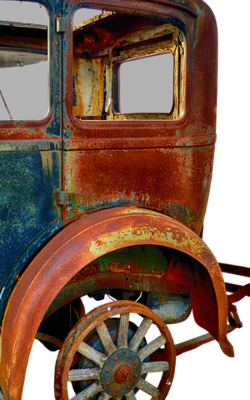Danish Bengal Part III
Danish Bengal Part III


Part III
It’s a more than 200 years old church, renovated and maintained by WB Govt and National Museum of Denmark. Church was closed as mass has happened in morning. This church is at the end of a road and a beautiful structure. I saw a big banyan tree just outside of the church and was thinking. Olav Bie, Governor, who hails from Norway wsa longest serving in India from Danish colony. During his time Sreerampur flourished as a prosperous city of trading. From 1800 he started building this beautiful church, where danes and Indian both worked, But before one year of completion Olav died, on 1806 Church was opened by his name. Olav was buried in Sreerampur. This church has royal symbol of Christian VII who was king that time in Denmark. This church was in bad shape and was closed for renovation for three years from 2013.
we were walking down from Olav church and in left residential area, right side there is big ground and few office areas. I suddenly rushed to one of the building in that big ground. Actually while in Denmark all building I saw there was no sun sheds which in India/Britain a very compulsory one. And I saw that office building, mainly Court and Govt office area did not have sunsheds! And just next to that building there was another office building which has sunshed and a typical British made one. A small similarity I saw and was so excited!
Until 1814 Denmark and Norway formed the kingdom, and the longest sitting head of Sreerampore was Ole Bie. During his service from 1776 to 1805 Sreerampore grew into prosperous town. Bie was known in Bengal as the Danish governor, but the title was in fact never approved. Sreerampore remained under the authority of Denmark earliest settlement in India Tranqueber in Tamilnadu. In 1800, Ole Bie began the construction of a Lutheran church for Seerampore protestant citizens. Originally planned as a simple three aisle building area with a flat roof, the church later enlarged with a open portico in front, and a vestry and special staircase behind the altar. the church was completed in 1806. Ole Bie died on 1805 and could not see this church. an epitaph honoring his achievements can be seen in the church together with five other commemorative tablets. Its not known when St Olav Church name came in use. Did Ole Bie name the church after Norway national saint Olav. Whose name he shared? Or did the name appear after his death to commensurate him? In the written source the church is simply called ‘the Danish church’. Sreerampur main post office is next building, hence this church is also referred as post office church.
Around 15 old cannons are now placed in a small park just in front of the Olav church. In 1940 Municipality of Sreerampur managed to collect all canons lying in the city in single place. This wonderful initiative was done by Mr Kesto Mukhopadhyay, municipality head that time (15-April 2002).
I have seen Christmas celebration on 25th August morning when church door is open for everyone. Church was decorated and mass prayer happened. Every year small mela happened in the church garden, but due to pandemic this year it did not happen. In a time before high rise buildings, St Olav spine was a landmark and seen from miles away. The british Governor General Wellesley who had country seat across the Ganges in Barackpore, personally supported the church construction. Wellesley used to miss his home and Church at Britain. Later he made a beautiful garden in his residential campus in Barackpore and he supported this Church to build.
Sreerampur which is historically a place for trading and textile mills used to be here. people from nearby places also used to come to work in these mills. Over years textile industries have faced decline. A textile industry was established in India in the middle of 19th century. The need for trained technical personnel to drive that was felt in Bengal which led to the establishment of the institution. The Government College of Engineering and Textile Technology Serampore was established in 1908 as the Government Central Weaving Institute with a two-year certificate course in weaving in a rented house in Serampore. In 1938, a three-year diploma course in textile technology was started which was upgraded to degree course in 1957 under the affiliation of Calcutta University.
In 1786, a British innkeeper called James Parr, opened the Denmark Tavern & Hotel, It's interesting that the 'Danish' tavern was founded by an Englishman and not a Dane. The reason being, Parr was already an expert in the hospitality business and had previously operated a 'London Tavern' too in (then) Calcutta. His prior experience in the business brought him to Serampore and this inn soon was named the best Danish hotel in India. Many details about the tavern were mentioned in William Carey's book, The Good Old Days of Honorable John Company (1882). Carey also wrote of another tavern situated in the area, run by a gentleman named Mr Meyers: "A trip up the river in cumbrous budge rows and pinnaces on pleasure excursions was a very common custom at the time. Large parties used to proceed as far as Bandel and other stations on the riverside, and remain absent from home for days. A wayside inn, like those at Serampore, must, therefore, have been a treat for the voyagers; and that there should have been found room for two in one settlement, proves that the visitors to Serampore must have been many, and that the town itself was worthy of. 2015 when this building was in ruins and original name and function had been forgone.
A search revealed that Thus the Danish authority bought only three bighas of riverfront land, on which was situated the establishment known as Denmark Tavern. As Serampore remained a popular and lucrative pit-stop among the Danish and English traders. Experts from the National Museum of Denmark, officials from the West Bengal government and conservation architect Manish Chakraborti have tirelessly worked on the restoration of the building since October 2015.
Bente Wolff, project head of the Serampore Initiative, National Museum of Denmark, said that Serampore was administered by Denmark under the name of Frederiksnagore till 1845, when Denmark sold its Indian possessions to Britain. The total cost of the project was around Rs 3.5 crore. The balcony of the tavern has a great view of River Hooghly, busy with vessels ferrying people and cargo up- and downstream. The furniture is traditional, with a series of handpicked paintings on Old Calcutta on the walls giving the tavern a vintage vibe. This Tavern is now a destiny for many tourists, tavern is facing the Ganges, its just opposite to Nissan ghat, which currently known as ladies ghat. It’s a two storied building where Downstairs it’s the restaurant and sitting place. Flury s has a small corner stall. Around 50 people can sit and dine. upstairs there are rooms to stay. backside of the hotel there is a small bagan for flowers. Danish food is extreme good, I liked Danish fish fry and Danish Deseart. And more lovely when I sat and enjoyed the ganges sitting in a widely open balcony of the tavern.

























































